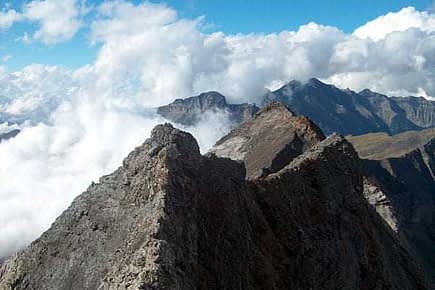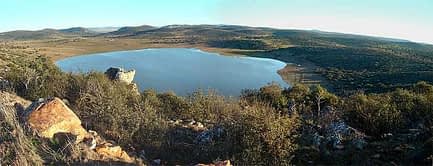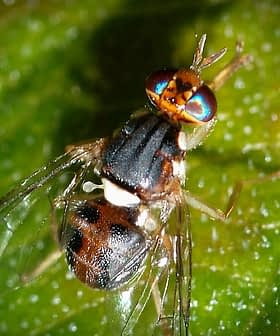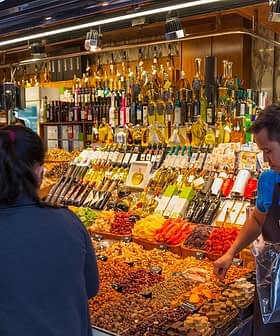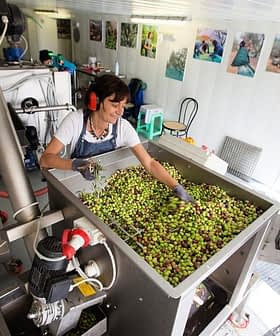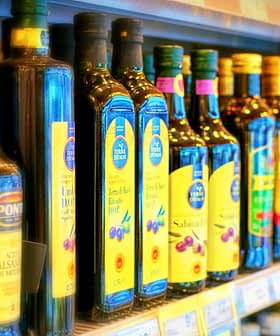The Campo de Calatrava region, in the very heart of La Mancha, would be incomplete without the presence of olive trees. These trees have survived each and every one of the civilizations that have populated the area over the centuries and, thanks to the same, now constitute a veritable emblem of the region.
Just a year ago, the European Union officially registered the Protected Denomination of Origin of the same name and, since then, its promoters have invested endless efforts in promoting the qualities of such an exclusive product.
In spite of its current bucolic and serene appearance, these lands have not yet succeeded in completely masking the virulence of their more distant past. Not even the passage of time, which has gradually disguised most of the signs and symptoms, has succeeded in erasing all clues of its troubled history.
Most mere mortals believe the Campo de Calatrava region, in the middle of the Ciudad Real province, is almost a desert, colonised solely by a few crops that manage to resist the dry soils and extreme climate. Nevertheless, in the eyes of experts, the promontories that suddenly raise the land, the hollows that press deeply into its surface, the materials that compose its soils and the lagoons that pepper the horizon are all essential clues that blatantly reveal an ancient region that was plagued by volcanoes.
Campo de Calatrava (Photo: University of Castilla-La Mancha)
Once the secret has been revealed, it is easy to see that the ring hills surrounding the many valleys that define the region are, in reality, the walls of a crater lost beneath the blankets of olive groves and vineyards that populate a boiler extinguished a long, long time ago.
A crop with a track record
The history of the olive tree in the heart of La Mancha does not by any means date as far back as that of the volcanoes. But it was not written yesterday either. On the contrary, various archaeological digs in the area have uncovered the stones of tree germanders and wild olives, indicating that even in the second millennium before our times, the ancient inhabitants extracted oil from the fruit of the wild olives.
Nonetheless, it wasn’t until the arrival of the Pheonicians first of all, and then the Romans, when the olive tree began to be mass cultivated. A custom that was even strengthened with the historical arrival of the Arabs.
With its hills and valleys, the olive grove landscape of Campo de Calatrava has survived practically intact to our times, preserving all of the peculiarities conferred by the morphologic, geographic and historic homogeneity of the region it represents.
It is precisely these peculiarities that the Asociación para la Promoción del Aceite del Campo de Calatrava has been defending since its creation in November 2005, and which six years later, led to the area’s registration in the European Union’s Register of Protected Designations of Origin.
The Campo de Calatrava region in figures:
- The Campo de Calatrava olive groves share the municipal districts of 16 places in the region.
- The olive trees are spread over a total of 8,500 olive groves, distributed over a surface area of 22,073 hectares.
- Between all of them, they have a mean annual production of 5,210 tonnes of oil.
.
Betwixt two lands
Geographically speaking, the Campo de Calatrava region is located half-way between the lands of Jaén and Toledo. While this region has its own very exclusive characteristics in terms of soil and climate, the truth is that its strategic location has also managed to influence the configuration of its olive grove’s varietals.
This is so much the case that, from its southern neighbour, Jaén in other words, it has taken the Picual varietal while, from its northern neighbour, Toledo, it has adopted the Cornicabra varietal.
In reality, there is a bigger representation of this second varietal, meaning that ultimately its fruit makes up 80 percent of the extra virgins under the PDO.
In any case, the combination of both types of olive give rise to very complete chemical and sensorial profiles. Among other virtues, these extra virgins guarantee a high oleic acid and polyphenol content; a medium intensity fruitiness with the presence of positive attributes in the nose such as green olive or fresh fruit; and quite remarkable bitterness and spiciness in the mouth as well.
Mission accomplished
For years now, the promoters of the Asociación para la Promoción del Aceite del Campo de Calatrava have been fully aware that their extra virgin olive oil is unique and impossible to copy in any other region apart from their own. Yet they did not see their mission accomplished until, as we mentioned above, the European Union finally recognised the exclusiveness of their product on June 29 2011, when the PDO was registered in the Registry of Protected Designations of Origin.
As a result, all the producers in the area achieved a significant goal which will not, however, be the only one as they have been demonstrating in the months since then.
Just because a recognised authority acknowledges the quality of a product does not mean that the consumers, who ultimately are the ones for whom the product is made, are aware of what they are dealing with. With a view to creating a solid oil culture among the inhabitants of its area, the PDO Aceite Campo de Calatrava has already set a number of didactic initiatives in motion, aimed mainly at those groups the consumption of their product is dependent on.
These would obviously be incomplete without housewives or students of the hostelry schools who, in the future, will prescribe this product through their recipes. These groups, together with the experts from the Spanish Cancer Association and students of various ages have discovered the healthy benefits of the region’s extra virgins and, at the same time, have contributed to promoting the oil tourism phenomenon in the area.
Asociación para la Promoción del Aceite del Campo de Calatrava
C/ Ramón y Cajal, 12
13260 Bolaños de Calatrava (Ciudad Real-España/Spain)
Tel.: +34 926 693 099
Olivarama articles also appear in Olivarama magazine and are not edited by Olive Oil Times.

